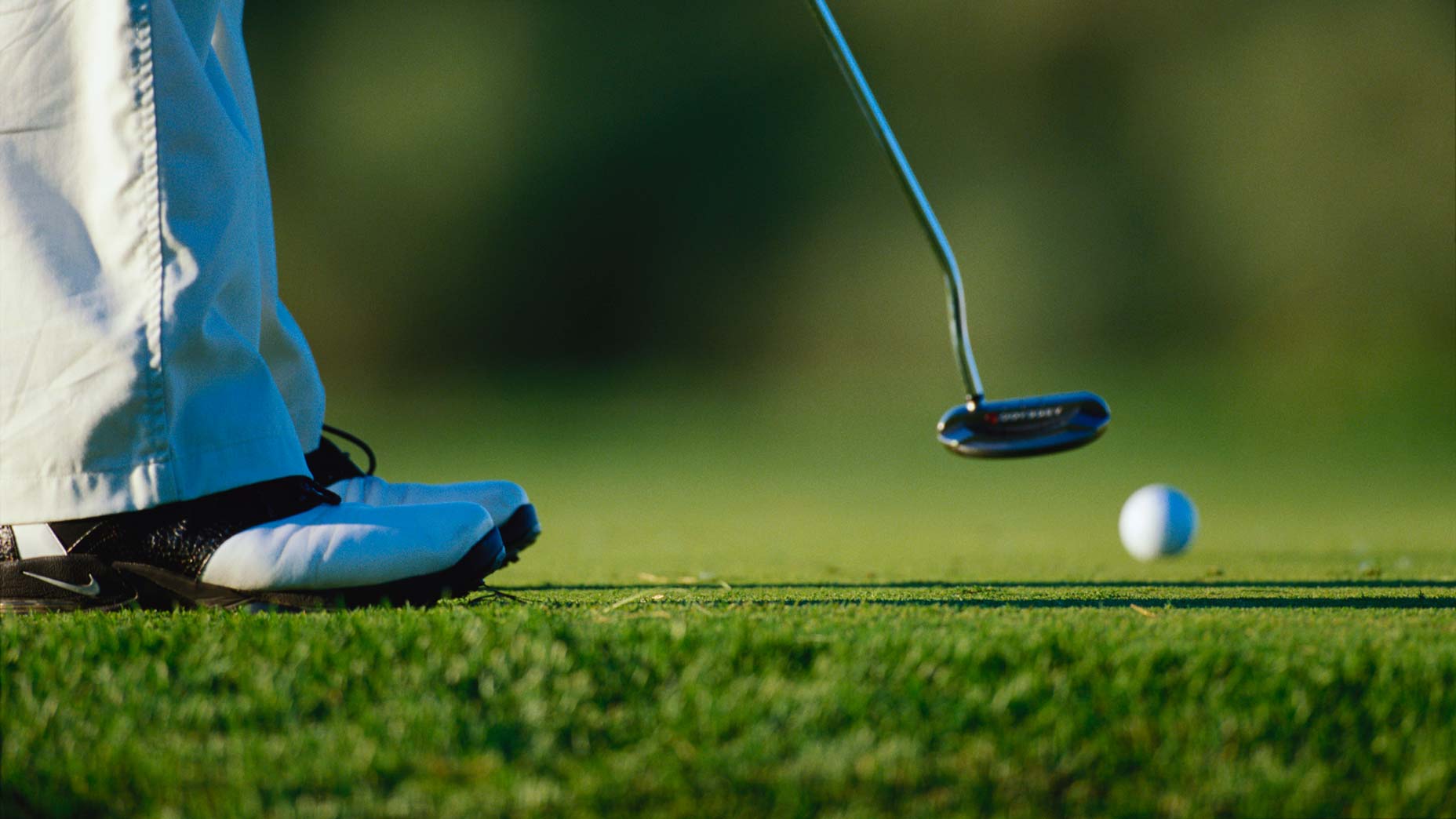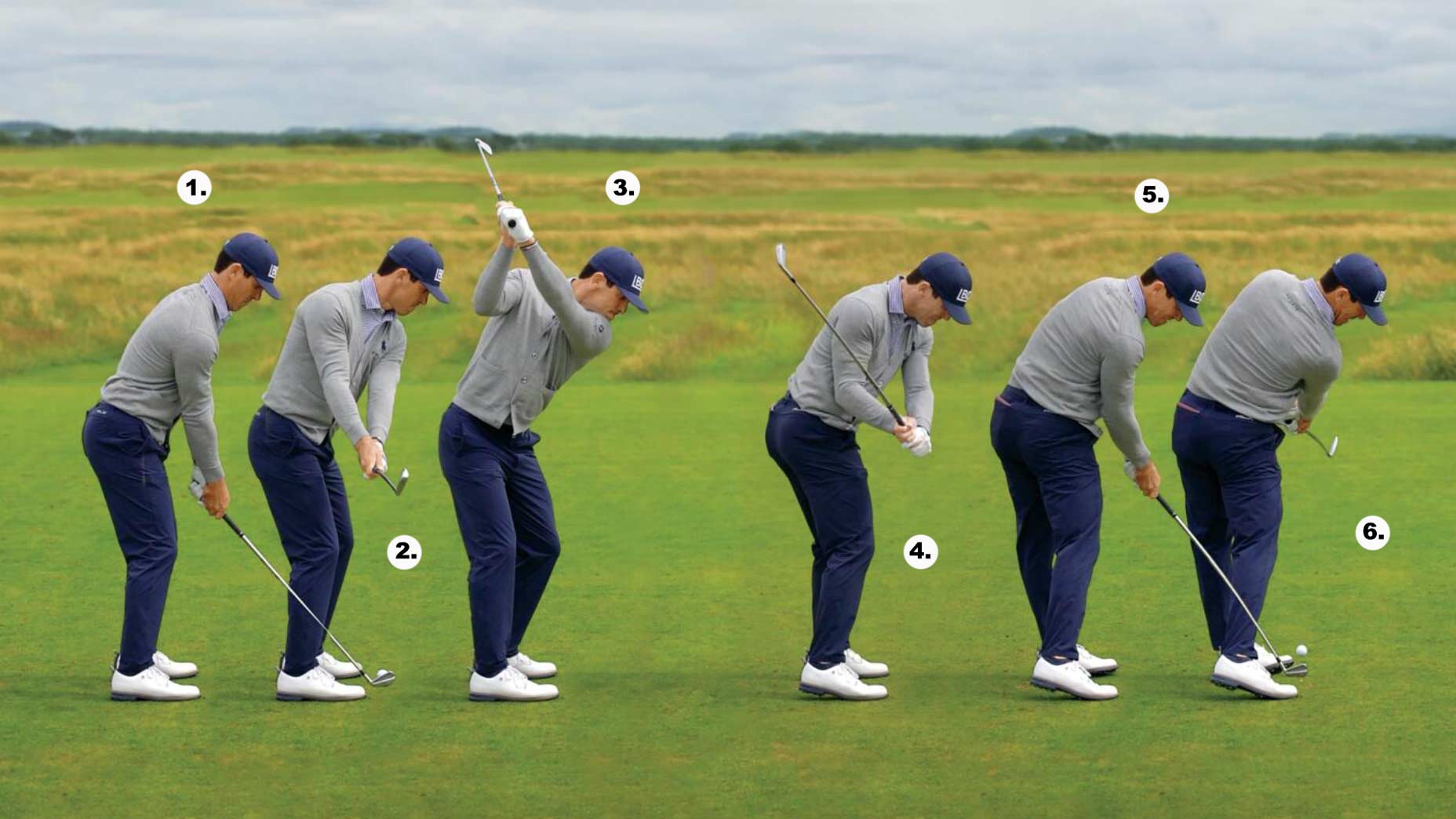Being a successful lag putter is a skill that pays off immeasurably. And it’s a skill that leads to lower scores and less stressful golf. If your first putt can roll within a two- to three-foot circle of the cup, it makes your next putt much easier. At Augusta, this skill can save players many strokes throughout the week, and it can be the difference between a green jacket and a year of what-ifs.
But beyond the gates of Augusta, lag putting is just as important. Unfortunately, the skill doesn’t come as easily for the recreational player as it does for the pros. Here are 10 reasons golfers struggle with lag putting.
1. Poor technique, setup, posture and ball position
As any skill in golf, being a successful lag putter requires a good setup. It’s your framework for success and particularly so in putting. Good putting posture, where you bend forward from your hips, will allow your arms to hang with your hands directly below your shoulders, allowing your arms to return repetitively where they hang.
Proper putter and ball position is particularly important when it comes to stroke path as well. From good putting posture, clap your hands together — this is approximately where you should position your putter in relation to your body. If your putter and ball are too far forward or too far back, your shoulder line will tend to be open or closed, resulting in an inconsistent stroke.
2. Too many moving parts
While it may be a bit easier to stay steady and still on short putts, it’s not so simple on lag putts. You’ve seen the golfer in your group who starts to move all over the place on long putts, and it isn’t always pretty. The problem with moving all over the place to generate more power is that it can cause inconsistent contact.
Have you ever hit a putt and your club gets a bit stuck on the green? This is caused by too much movement during the stroke. You can minimize this movement by keeping your weight consistent in your feet throughout your stroke. Your weight should not shift or move. Try to feel like you are flat-footed throughout the stroke for a more solid base.
3. Poor green reading
Green reading is a skill that can be learned. The challenge of reading longer putts is that it takes patience to read sections of the putts rather than reading the entire putt at once. The green will certainly have a predominant tilt for drainage, and this is a great place to start. Longer putts require reading parts of the whole.
And while you may not be the most skilled green reader, there is help out there. Take the app GolfLogix, for example. They have heat maps for over 14,000 courses that can assist you on the greens and help lower your scores. Check it out at store.golflogix.com. (Ed note: GOLF.com and GolfLogix are owned by the same parent company, 8AM Golf.)
4. Understanding how to control distance
How do you control distance in putting? Ideally, with stroke size. As your backstroke gets longer, the speed at which the putter falls will naturally increase and therefore the ball will roll further.
I often hear golfers say, “I didn’t hit it.” In most cases, that is not the truth. If you don’t put enough gas in the tank, you cannot get to your destination. It can be helpful to understand that in an effort to make a larger backstroke to create more speed and distance, the putter head should naturally elevate. The larger the stroke the higher the putter head will elevate relative to the ground. Many golfers falsely think they need to keep their putter head low throughout their stroke and this can make it nearly impossible to make a large enough stroke.
5. Know your stroke style
Not all putting strokes are the same. Some strokes are smooth and silky and some are short and punchy. Both styles are correct, you just have to determine which is best for you. The reason this is so important is that your backstroke size will need to match your stroke type.
I often find that pop strokes work a bit better on slower or grainy greens to help you to get enough power to roll the ball the right distance. Quicker greens seem to cater to putters with a smooth stroke. Even in size, even in rhythm and even in grip pressure can all help consistency.
6. Unrealistic expectations
I caddied for my then 10-year-old son in a junior tournament last year. Of course, I wanted to help, but I also wanted to let him make a lot of the decisions himself so he could learn. Giving him my expert mom/golf-professional/caddie advice on trying to respect the downhill by rolling his longer putts close enough to tap in seemed logical to me, particularly because almost every first putt sailed by the cup on its way to a three-putt. I knew he was trying to make every putt.
On our ride home, he told me, “You know mom, when you told me to just get the putt close, I just went for everything anyway.” Since then, he has become quite a good lag putter. What changed were his expectations. He’s matured to understand that the goal of almost all lag putts is to roll the ball the correct speed to get the ball as close as possible.
7. No understanding of distance
How long is your putt? How long will it actually play? Starting to be aware of the putt length can be a good place to start. If you aren’t a good recognizing exact distances, try pacing off your putts to give you a sense of the distance of the putt. Once you start to recognize these distances, it becomes much easier to gauge the proper stroke size.
8. Misjudging uphill and downhill
No. 9 at Augusta is a great example of the danger of downhill speed. With a large false front, the ball will roll all the way back to your feet if you don’t make it to the proper area of the green. To compensate, many players leave themselves above the hole and face a slippery downhill putt.
When the players are on the course preparing for the tournament, their practice rounds will include several attempts to roll this putt. Once you have the true sense of the total distance of your putt, you need to adjust for uphill and downhill. Obviously, uphill will need a larger stroke and downhill a smaller stroke but knowing how much to adjust takes attention and time.
Golfers seem to have tendencies that repeat, like always being short uphill. If this applies to you, you can start to “trick” yourself into adjusting.
On a downhill putt, if you choose your distance target well short of the actual cup, you can train your body to take the smaller back stroke necessary to offset the speed of the hill.
Uphill, if you stand a bit back from behind your golf ball, the putt will look longer and help to convince you to take a large enough stroke. These tactics will help to adjust for the same distance putt playing significantly longer or shorter due to the slope of the green.
9. Failure to practice
A round of golf may have 18 different length putts, which will likely require all different size strokes to control distance. If you have the skill of distance control then you may not need to spend a lot of time on the practice green, but this isn’t the case for many. Being good at controlling distance takes time and practice.
If you have time to roll some putts before you play, this will help give you a sense of the speed of the greens. In your warm-up or practice time, roll long putts trying to get your golf ball closer to the hole than the length of your putter. If you can consistently leave the ball in this range, your scores will certainly be lower.










